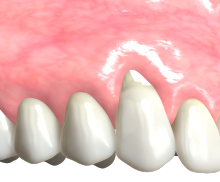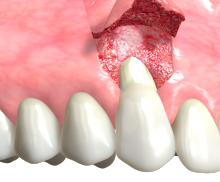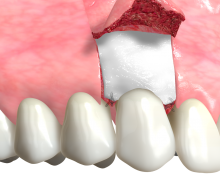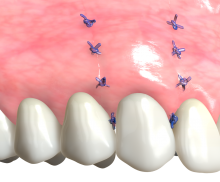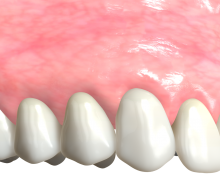Flap surgery in conjunction with a collagen matrix
|

mucoderm® is a natural type I/III collagen matrix originating from porcine dermis that undergoes a multi-stage purification process, which removes all potential immunogenic substances. The remaining matrix is a membrane with a high interconnected porosity that consists of collagen and elastin [3, 4]. mucoderm® promotes the revascularization and fast soft tissue integration and is a valid alternative to the patient’s own connective tissue [1, 2].
After application, the patient’s blood infiltrates the mucoderm® graft through the three-dimensional soft tissue network, bringing host cells to the soft tissue graft surface and triggering the revascularization process. The collagen network serves as a scaffold for ingrowing blood vessels and cells like fibroblasts, thus supporting a fast revascularization and tissue integration. While collagen is produced by the adhering cells, the matrix is gradually degraded and finally replaced by host tissue [5].
In specific indications the use of an autologous graft may be recommended, e.g. if a very thin flap is prepared or a tension-free flap closure cannot be achieved or a considerable increase in keratinized width is required.
